The key difference is pressure: Diabetic socks are non-binding and seamless, designed to protect sensitive feet from irritation and injury without constricting flow. Conversely, compression socks are intentionally tight, using graduated pressure to actively squeeze your legs, boost circulation, and reduce fluid buildup and swelling.
Introduction
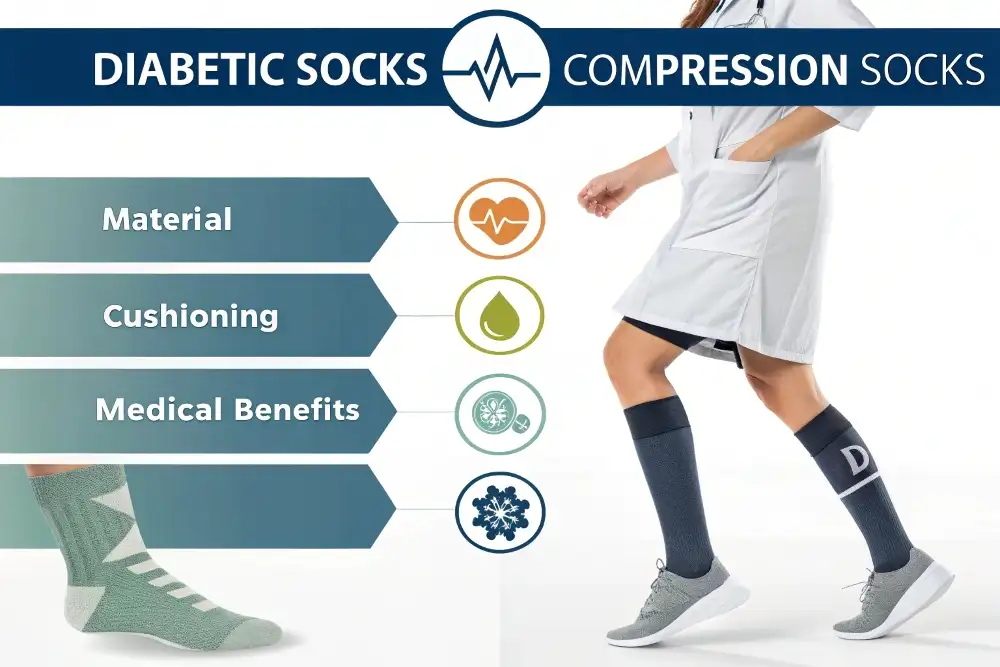
When it comes to health-conscious consumers, the socks they choose can make all the difference. For brands and retailers, understanding the subtle yet significant differences between diabetic socks and compression socks is crucial. Both types of socks serve a specific purpose in addressing health needs, but they’re far from interchangeable. Diabetic socks are designed with a focus on comfort, reducing pressure, and preventing complications for those with diabetes, while compression socks are all about boosting circulation and aiding recovery for active individuals.
This distinction not only helps solve customer health challenges but also opens the door for brands to offer targeted solutions that resonate with their audience. By distinguishing between these two types of socks, businesses can better position themselves in the marketplace, ultimately driving sales and customer loyalty. So, let’s explore the key differences and how knowing them can help you make smarter choices in product offerings.
Diabetic Sock Basics: Core Functions and Features
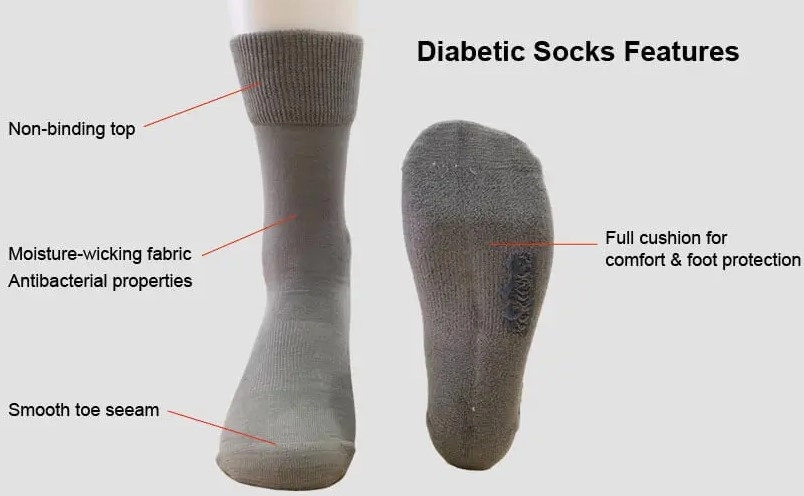
For individuals managing diabetes, diabetic socks are more than just everyday clothing—they’re a fundamental part of preventative foot care. Designed to reduce the risk of skin breakdown, ulcers, and infections, these socks offer targeted support that helps prevent complications commonly associated with diabetic neuropathy and poor circulation.
Seamless Design to Minimize Friction
One of the core features of diabetic socks is the seam-free construction. Traditional sock seams can rub against the skin, especially during walking or long periods of standing. This friction, although minor for most people, can result in serious complications for those with sensitive or damaged skin. Seamless diabetic socks reduce this risk by providing a smooth interior surface that prevents irritation and supports skin integrity.
Cushioning for Pressure Relief
Many diabetic socks feature extra padding in the sole, heel, and toe areas. This helps absorb shock and reduce localized pressure, which is crucial for preventing foot ulcers—especially in patients with reduced sensation. The cushioning acts as a buffer against hard surfaces, making walking or standing more comfortable while reducing the likelihood of injury.
Moisture Management and Breathability
Materials like bamboo fibers or treated cotton blends offer moisture-wicking properties, pulling sweat away from the skin to keep feet dry. Damp environments can promote fungal infections, which are especially problematic for individuals with compromised healing capacity. Breathable fabrics ensure air circulation, enhancing comfort while reducing infection risk.
Non-Binding Construction for Circulation
A non-binding top band ensures that the sock stays up without squeezing the leg. This gentle fit is important for maintaining healthy blood flow, particularly for patients who experience swelling or have circulatory challenges.
When properly selected and fitted, diabetic socks play a vital role in daily foot care routines, helping to prevent complications and improve quality of life.
Compression Socks 101: Functionality Beyond Circulation
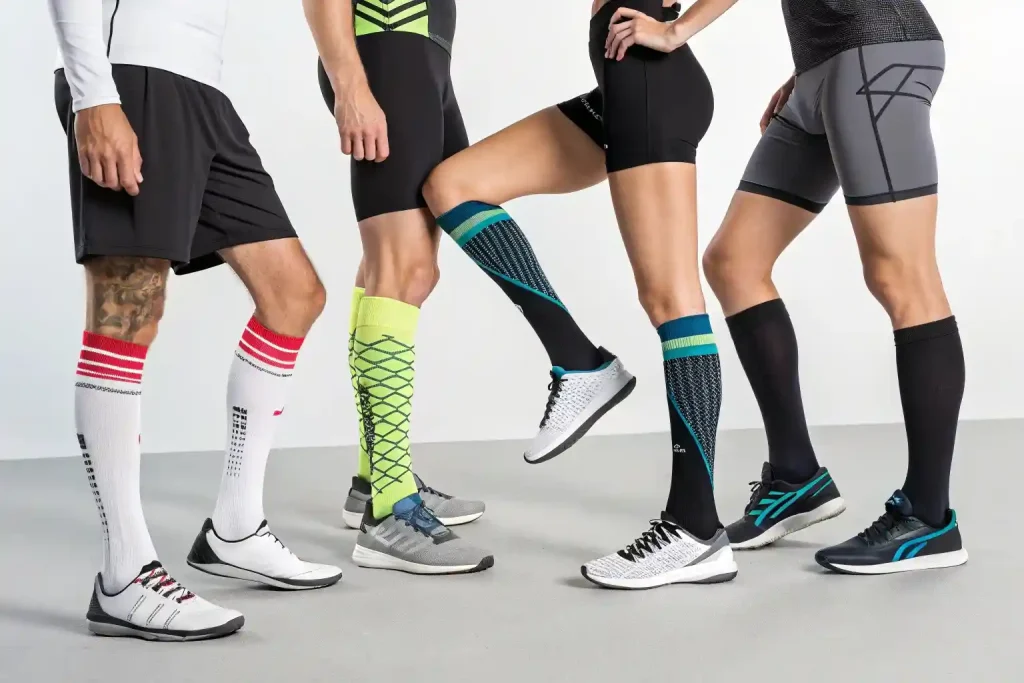
Compression socks are designed to support and enhance blood circulation, but their benefits extend far beyond that. The primary function of compression socks is to apply controlled pressure that improves venous blood flow, especially in the legs. The pressure is greatest at the ankle and gradually decreases up the calf, which encourages the return of blood to the heart, helping to reduce swelling and prevent conditions like deep vein thrombosis (DVT).
In addition to supporting circulation, compression socks are widely used for muscle recovery. Athletes, for example, wear compression socks during and after intense exercise to reduce muscle fatigue and speed up recovery. Similarly, travelers can benefit from wearing compression socks on long flights, as they help to combat swelling caused by prolonged sitting and reduce the risk of blood clots.
These socks also play a critical role in post-surgery recovery, where they help to prevent blood clots and improve healing. Compression socks are versatile and can be used by a variety of individuals, including those with circulation issues, athletes, and anyone looking to improve leg health or reduce swelling.
Diabetic Socks vs Compression Socks: Side-by-Side Functional Use
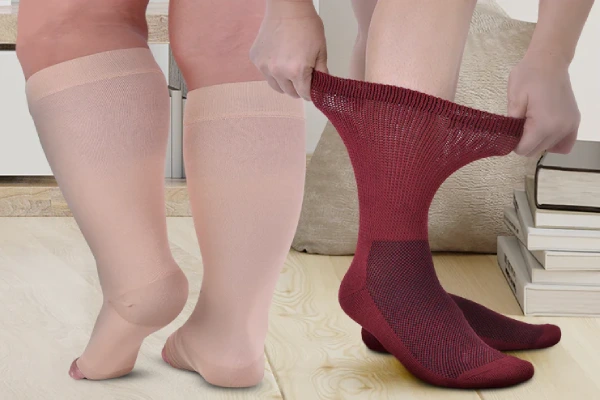
When comparing diabetic socks to compression socks, the core functional differences become apparent. Diabetic socks are primarily designed for foot protection and to prevent complications such as ulcers, blisters, and infections. They focus on reducing friction, minimizing skin irritation, and providing comfort without restricting blood flow. This makes them particularly beneficial for diabetic individuals who are at risk of developing foot sores or infections.
Compression socks, on the other hand, are primarily focused on improving circulation. They provide medical-grade support, particularly for individuals experiencing swelling, varicose veins, or circulation issues. The controlled pressure applied by compression socks helps promote blood flow back to the heart, alleviating discomfort and preventing conditions like DVT.
However, there are instances where both benefits overlap. Diabetic patients who also suffer from poor circulation may benefit from a hybrid solution that combines the foot protection of diabetic socks with the circulatory support of compression socks. In these cases, a balanced approach that offers both protection and circulation support can provide the most effective solution.
Diabetic Sock Materials & Construction: Safety First
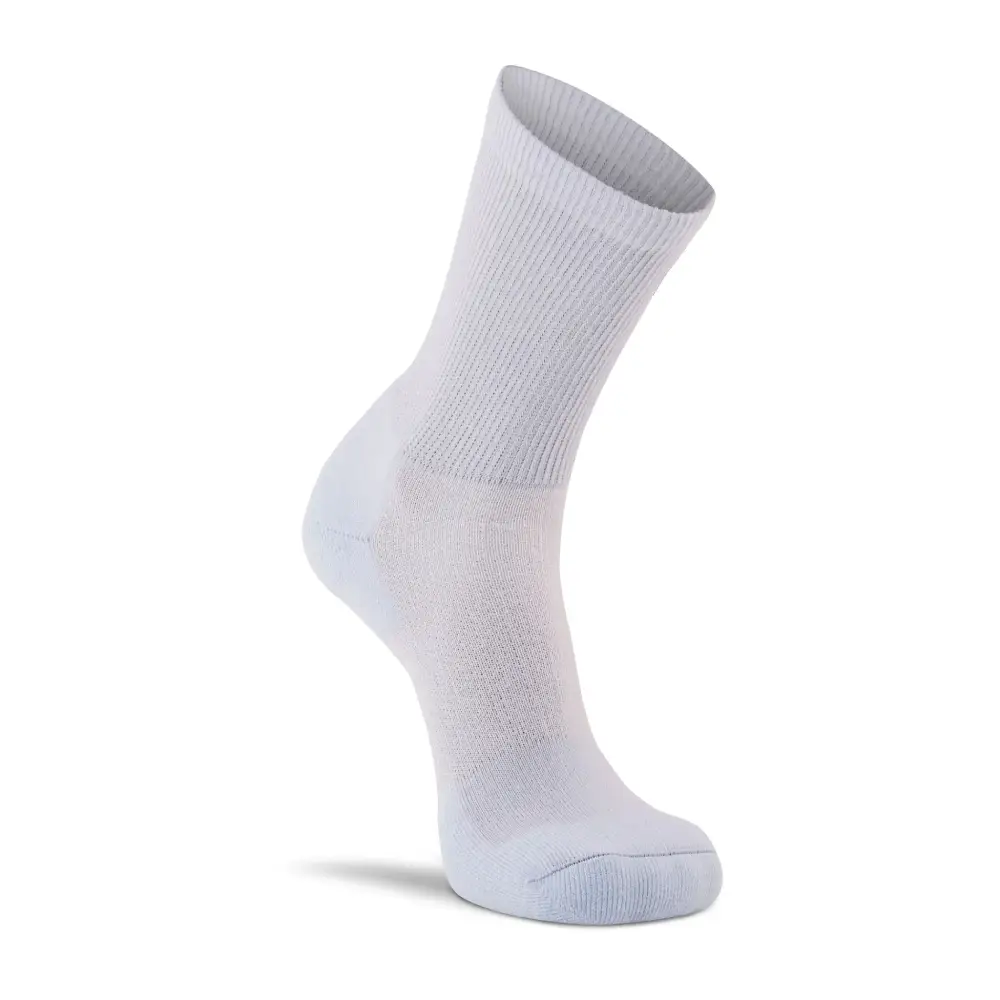
The materials used in diabetic socks are essential to ensuring comfort, protection, and safety. Soft, breathable yarns such as merino wool and treated cotton blends are common choices for diabetic socks. Merino wool, known for its natural softness and moisture-wicking properties, helps keep feet dry while providing warmth. Treated cotton blends offer a lightweight, comfortable fit, while also ensuring breathability, which helps reduce irritation and overheating.
Antimicrobial properties are another important feature of diabetic socks. Many are made with antibacterial yarns, such as copper-infused threads, to reduce the risk of infections—a major concern for diabetic individuals. By preventing the growth of bacteria and fungi, these socks create a healthier environment for the feet, lowering the risk of foot ulcers and other complications.
The design of diabetic socks also plays a key role in comfort. Seamless toe closures prevent pressure points, while elastic weaving ensures a snug fit without restricting circulation. These thoughtful design features help keep the sock in place throughout the day, making diabetic socks an essential part of managing foot health for those with diabetes.
Compression Sock Engineering: Balancing Pressure and Fit
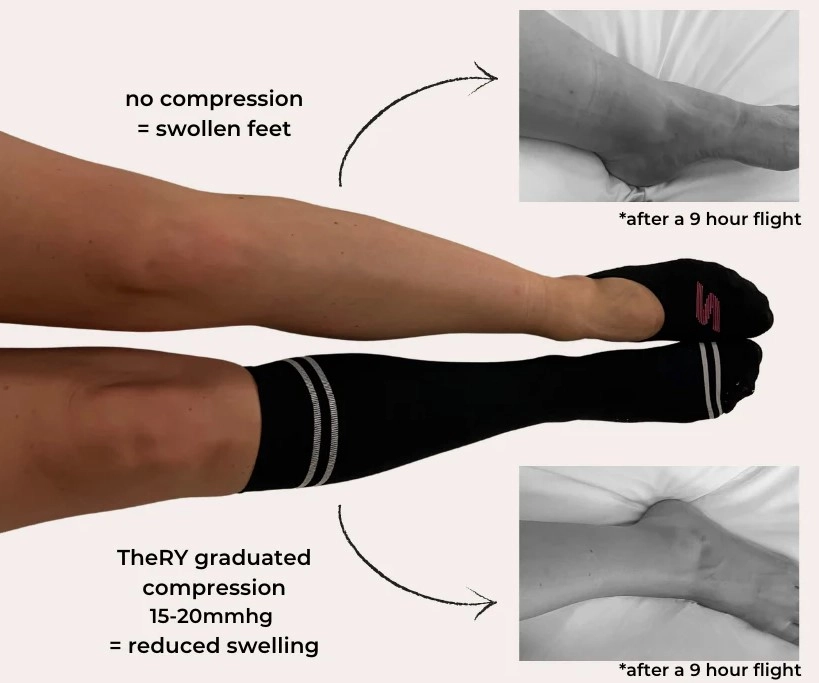
Compression socks are engineered to apply controlled pressure that enhances circulation, but the materials used are critical in achieving this effect. Nylon-spandex blends are commonly used for their elasticity, allowing the sock to create a pressure gradient that is highest at the ankle and gradually decreases up the calf. This design encourages blood flow back to the heart and reduces swelling, making compression socks particularly effective for people with circulation issues.
Sizing is crucial in compression socks. A proper fit ensures that the socks provide the correct level of pressure. If the socks are too tight, they can cause discomfort or restrict blood flow, while an ill-fitting sock may not provide enough compression to be effective. For brands and retailers, offering a range of sizes and ensuring accurate measurements are key to delivering a product that provides optimal support for the customer.
By focusing on the proper fit and using materials that offer both elasticity and comfort, compression socks provide an effective solution for individuals looking to improve circulation and reduce swelling. Their versatility makes them suitable for a wide range of users, from athletes to those recovering from surgery.
Who Needs Diabetic Socks? Identifying Your Target Customer

Target Customer Groups: Diabetic socks are essential for individuals at high risk of foot complications, especially those with diabetic neuropathy. This condition often leads to a loss of sensation in the feet, making it difficult for individuals to detect injuries or infections. Diabetic socks help prevent these issues by offering protection, moisture control, and comfort. They are ideal for people with diabetes who have a history of foot problems or those who experience swelling and poor circulation.
Additionally, elderly individuals who suffer from poor circulation can benefit greatly from wearing diabetic socks. The non-binding, gentle fit helps promote healthy blood flow and reduces discomfort caused by swelling. These socks are perfect for daily wear, providing protection and comfort throughout the day.
Retailer Tips: For brands and retailers, it is important to educate customers on the critical role diabetic socks play in daily foot care. Emphasize their protective qualities for individuals with diabetes, especially in preventing foot injuries and managing swelling. Highlight the need for regular use to maintain foot health and avoid complications. By educating customers on these benefits, retailers can position themselves as trusted providers of foot health solutions for diabetic individuals.
Compression Socks’ Broader Market: Beyond Medical Needs
While compression socks are often associated with medical use, their benefits extend far beyond that. Athletes, for example, use compression socks to enhance their performance and speed up muscle recovery. The graduated pressure helps reduce muscle vibration and fatigue, leading to improved endurance during workouts and faster recovery afterward. Compression socks also minimize swelling and improve circulation, which can be essential for maintaining optimal athletic performance, especially during intense physical activity.
Beyond athletes, compression socks are increasingly popular among pregnant women and individuals who travel frequently, such as pilots. For pregnant women, these socks help combat edema, or swelling, which is common during pregnancy due to increased fluid retention. Similarly, for long-haul travelers or pilots who spend extended periods seated, compression socks provide much-needed relief from swelling and discomfort. By promoting circulation and reducing pressure on the legs, compression socks play a key role in keeping these individuals comfortable and healthy during long flights or journeys.
Custom Socks: Tailored Solutions for Your Brand
As a brand or retailer, offering custom solutions for your customers can make a significant difference in meeting their specific needs. We provide custom diabetic socks and custom compression socks that are designed to align with your brand’s values and your customers’ health requirements. Whether you’re looking to incorporate your unique logo, select specific colors, or use specialized materials, we offer a range of customization options. Our socks are crafted with the same high-quality materials and functional designs you trust, while also ensuring they meet the individual needs of your target customers. With our customization services, you can offer differentiated products that stand out in the market, enhancing your product line and fostering customer loyalty. Let us help you create the perfect diabetic or compression socks that not only reflect your brand but also provide the protection and support your customers need.
Purchase Guidelines for Your Customers
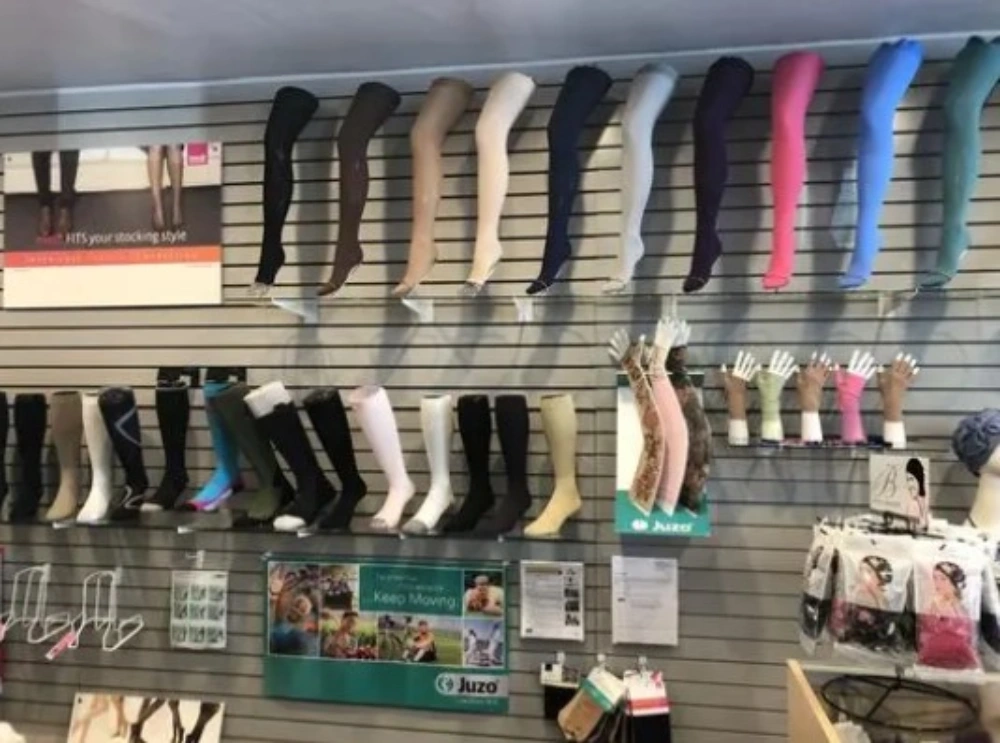
Diabetic Socks
When purchasing diabetic socks, prioritize socks with a seamless design, as they help avoid friction and irritation. Materials with excellent moisture-wicking properties, such as treated cotton or bamboo blends, help keep feet dry and reduce infection risks. Opt for a looser fit to avoid restricting circulation, as tight socks can cause discomfort or worsen blood flow issues. Soft, breathable fabrics ensure maximum comfort for the wearer.
Compression Socks
For compression socks, it’s essential to consult with a doctor or a professional fitter to determine the appropriate pressure level and size for the individual. First-time users may want to choose socks with lower pressure levels to allow for an easier adjustment period. Look for socks made from moisture-absorbing materials like merino wool or nylon to keep feet dry and comfortable. The right balance of pressure and material ensures that the socks are both effective and comfortable for the wearer.
Addressing Misconceptions: When Diabetic Patients Need Compression
Compression socks can help diabetic patients with swelling, known as diabetic edema, but they must be used carefully. Before using compression socks, diabetic patients should always consult a doctor. The wrong type of compression can cause further issues, so it’s important to ensure that the compression socks are specifically designed for diabetic feet. With proper doctor approval, diabetic patients can use compression socks to manage swelling safely.
Retailers should be cautious when recommending compression socks to diabetic customers. Not all compression socks are suitable for people with diabetes, especially those with sensitive feet or circulation issues. Selling the wrong type of socks could cause discomfort or even harm. It’s important for retailers to offer compression socks that are specifically designed for diabetic needs, ensuring they help rather than hurt the customer. Educating customers about the right sock choice can prevent problems and build trust.
FAQs
Can compression socks be used by diabetic patients?
Yes, diabetic patients can use compression socks, but they should consult a doctor first. Some compression socks are designed specifically for people with diabetes, combining benefits for circulation and foot protection.
Can compression socks be worn during exercise?
Yes, compression socks are often used by athletes during and after exercise to enhance performance and speed up recovery. They help improve blood circulation and reduce muscle fatigue, making them ideal for active customers.
Are compression socks suitable for people with varicose veins?
Yes, compression socks are often recommended for individuals with varicose veins. They help reduce swelling and improve circulation, providing relief and supporting the legs. However, customers should consult a healthcare provider before using them.
How can I differentiate diabetic socks from regular socks in my store?
Diabetic socks are designed with special features like seamless construction, non-binding tops, and moisture-wicking materials that regular socks do not typically offer. Highlight these features to help customers understand the added benefits for diabetic foot care.
Are diabetic socks safe for people with sensitive skin?
Yes, diabetic socks are safe for people with sensitive skin. They are made from soft, non-irritating materials that help minimize friction and prevent sores, making them ideal for individuals with delicate or sensitive skin.
Conclusion
Understanding the differences between diabetic socks and compression socks is key for brands and retailers who want to offer the best solutions for their customers. Whether it’s preventing injuries, improving circulation, or managing swelling, each type of sock serves a unique purpose in promoting foot health. By offering products that are carefully designed to meet the specific needs of your customers, you can ensure they get the support they need while preventing potential complications.
If you’re ready to offer high-quality, customized diabetic socks, explore our wide range of customizable options designed to meet the needs of diabetic patients, and let us help you provide the best products for your customers’ needs.
